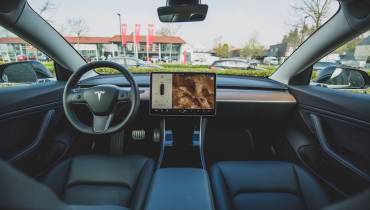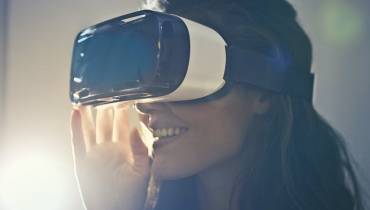Smart Clothing Is Set to Break into the Mainstream

Wearable fitness and health devices such as Apple Watches and Fitbit’s have become almost mainstream now as they have been around for the best part of half a decade.
Beyond fitness devices on the wrist, technology such as rings that monitor your sleep and provide a readiness score for the next day, and straps that monitor recovery after exercise have also become popular.
One type of wearable fitness that has not fully penetrated the mainstream consumer market quite yet is smart clothing. However, it is a market that looks set to boom over the next few years as people start to find the value in using numbers to learn how their body functions.
Examples of smart clothing include yoga pants that send pulses to your hips that remind you to either move or hold your current position, or a bikini that reminds you when you have spent too long in the sun or need to apply more sunscreen.
Smart clothing going mainstream
The more subtle way to make this technology go mainstream is to incorporate it into people’s clothing without it being obvious.
That is why it is likely that normal look gym clothing that can monitor the exercise being undertaken is going to become the norm in many gyms and exercise classes over the next decade.
Many examples of smart clothing can come across as pointless expenses for those who can afford them, but a thematic report from GlobalData reported that in 2020 the smart clothing industry was worth $668 million. That shows you there is already enough of a basis for the products to be taken mainstream.
It is projected In the GlobalData study that by the year 2030 the sector will be worth more than $4bn thanks to a compound annual growth rate of 21%, as smart clothing products become more accessible and are worn more widely. This growth is supported by progress in electronic textiles, artificial intelligence, and motion tracking, which are key features of smart clothing.
Benefits of smart clothing
It is difficult to understand what the benefits of smart clothing are without being presented with some examples of it that we could all picture using in our daily lives. Most smart clothes connect to apps on smartphones software on other devices like laptops and PCs.
Using sensors and other hardware, the clothing can gather activity metrics and key biometrics that form what is presented to the user within the app or software.
In terms of smart activewear, examples include polo shirts made by Ralph Lauren that record your fitness activity and recommend new workouts to the user within the mobile app.
Another example is smart socks by Sensoria which detect what areas of your feet are receiving the most pressure during a run or exercise.
It is not just activewear that companies feel can make use of embedded technology. Samsung recently made a business suit that can exchange digital cards and interact with other devices.
Under Armour produced sleepwear that absorbs heat from the wearer’s body whilst releasing infrared light to increase sleep quality and enhance muscle recovery.
In terms of the average consumer, smart clothing is more expensive than average exercise attire given the extra costs of embedding the technology needed. As it becomes more widely produced and the technology becomes more accessible, costs will likely come down.
Predicted smart clothing boom
One of the main reasons for the predicted boom in the smart clothing industry is that industries such as professional sports, healthcare, and the military are expected to utilize the technology on a much wider scale. The ability to provide continuous monitoring of physical activity is very important in such industries.
Essentially, the projected growth into a $4bn industry comes down to the expected arrival of major investors from leading technology and apparel companies. Big tech companies such as Samsung and Google have already dabbled in smart clothing and more are expected to ramp up their efforts and production over time.
For now, though, smart clothing still remains somewhat an expensive luxury for those who can afford it to enhance their personal training, sleep, and business lifestyles.













![7 Inspirational Quotes to Uplift You [INFOGRAPHIC] young-woman-inspired-notes-smile-inspiration-quote](/sites/default/files/styles/video_thumbnail_bottom/public/young-woman-notes-smile-inspiration-quotes.jpeg?itok=DqYtOSE1)





